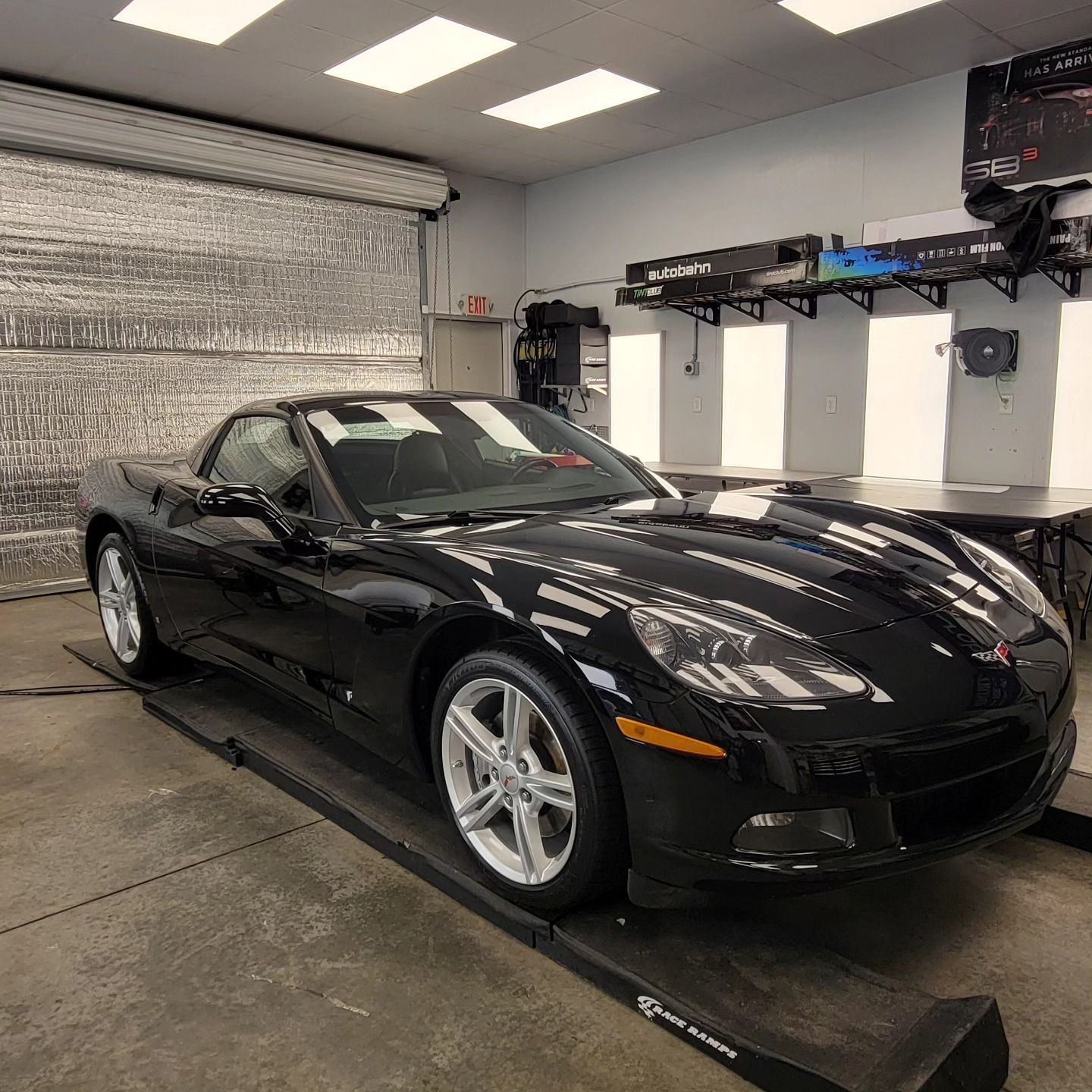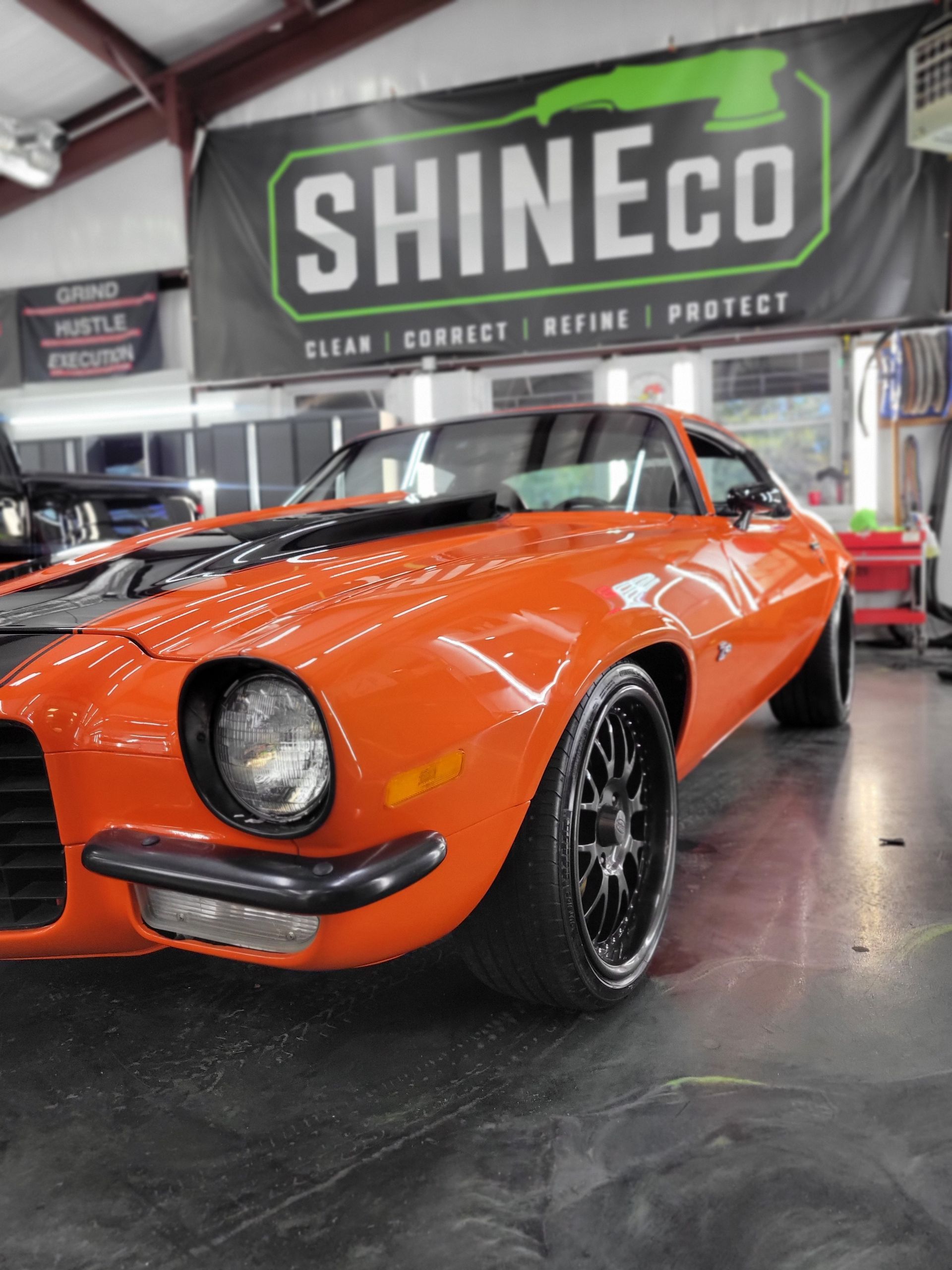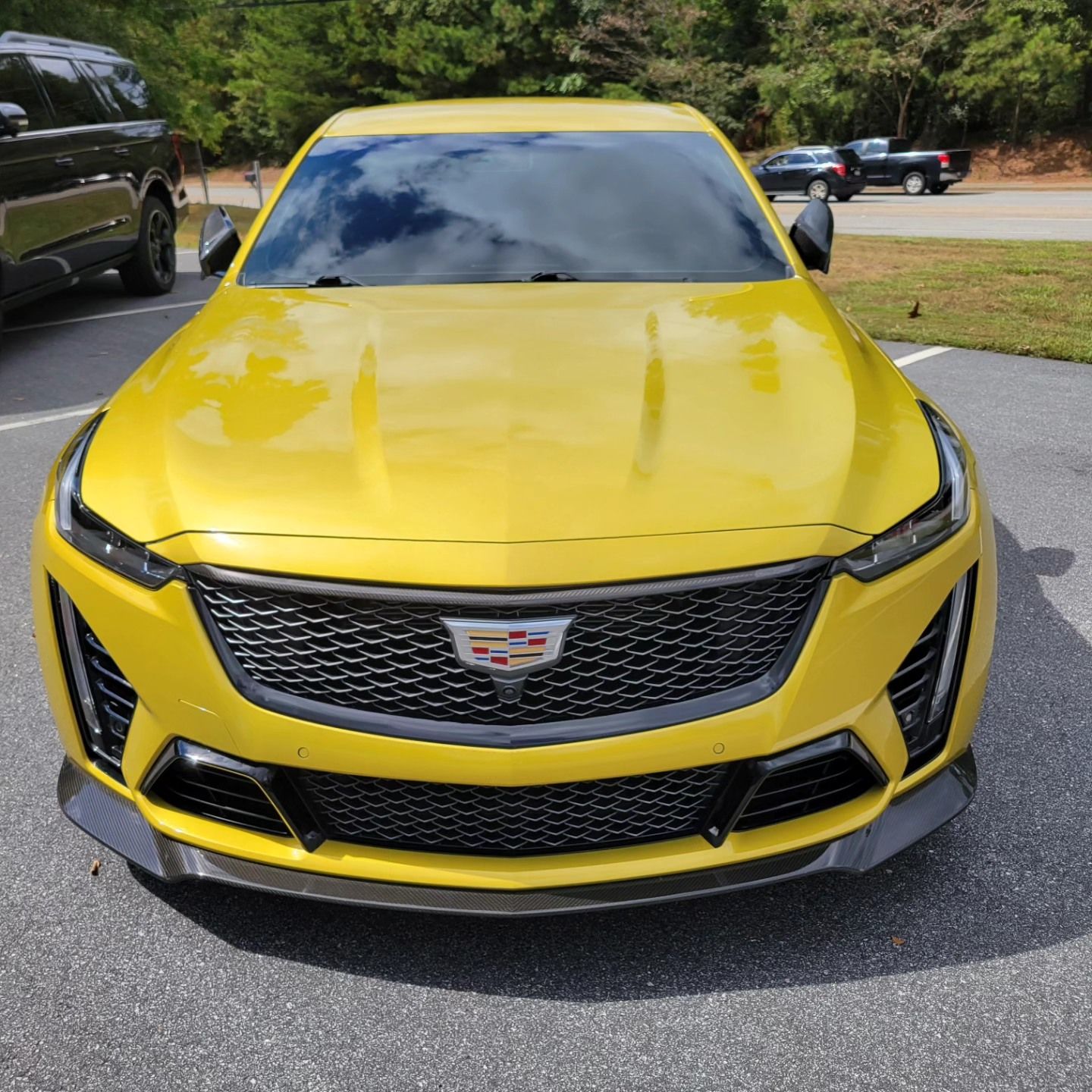Ceramic coating is one of the best ways to protect your car’s paint and keep it looking shiny for years. Once you’ve invested the time and effort to apply this tough layer, you might wonder when you can hit the road again. Waiting after the application may feel like an eternity, especially if you’re excited about your car’s new look. However, understanding the importance of this wait can save you from potential headaches down the line. In this article, we'll dive into how long you should hold off on driving and go over some essential care tips to ensure your coating does its job effectively. Let's take a closer look at what you need to know!
It is recommended to wait at least 24 hours after applying ceramic coating before driving your car. This waiting period allows the coating to cure effectively, ensuring it bonds well with the vehicle's surface and provides maximum durability and protection.

How Long Should I Wait?
After applying a ceramic coating, it’s important to be mindful of the timing involved for optimal protection. Most coatings need a minimum of 24 to 48 hours to bond effectively with your vehicle's surface. This curing time is essential because it allows the coating to adhere properly, forming a robust layer that shields against environmental contaminants and enhances the car’s shine. But waiting can feel tedious when you want to get back on the road.
Step-by-Step Timing Guide
Let’s break down the timeline further so you know exactly what to expect:
- Initial 24 hours: During this critical phase, the coating begins its bonding process. It may look dry, but it's still in its early stages of curing. For best results, do not move your car during this period; even minor vibrations can disrupt proper adhesion. Think of it as giving your car some quiet, focused time to settle into its new protective layer.
- Following 24 hours: After the initial bonding period, your coating will start to strengthen, but the commitment isn’t over yet. During these next 24 hours, avoid driving through rain or areas laden with dust and debris—think of your freshly coated car like a newborn; you wouldn’t want it exposed to unnecessary elements while it's still getting used to its new world.
- First 7 days: The week following the application is equally crucial. The ceramic coating continues to harden, so it’s advisable to steer clear of any car washes or harsh chemicals that could disrupt this critical process. You want your coating to develop its hydrophobic properties without interference, so treat it gently during this time.
- Full cure (7-10 days): Finally, after about a week or up to ten days, your ceramic coating reaches its full potential for hardness and durability. At this point, you can drive your car You can confidently enjoy the exceptional protection that comes from these carefully applied layers.
Remain patient—the longer you wait during these initial stages, the more effective your ceramic coating will be in safeguarding your vehicle.
It's worth noting that environmental factors can influence these time frames too; humidity and temperature not only impact curing times but can also change how effectively the product performs as it interacts with the vehicle's surface. Understanding these elements equips you with the knowledge needed to ensure optimal application results.
Factors Influencing Cure Time
One of the most critical elements in determining how quickly your ceramic coating will cure is the surrounding environmental conditions. Temperature and humidity are at the forefront of this equation. Ideally, you want to apply your ceramic coating in an environment where the temperature sits comfortably between 60°F and 80°F (15°C to 27°C). However, if the air is heavy with moisture or temperatures dip too low, you may find your curing process dragging on—sometimes even extending beyond 72 hours. Picture a humid day where breathable air feels thick; that's not ideal for your new coat of protection.
In contrast, warm and dry weather works as an accelerant, helping the coating bond more quickly to the surface of your vehicle. The sun can act as a natural amplifier, promoting faster evaporation of the solvents in the coating, leading to a stronger bond with the paint underneath. This is why many enthusiasts recommend applying the coating on a sunny day; however, you should be cautious of direct sunlight hitting the surface, as it can cause uneven curing.
From environmental concerns to application techniques, it's crucial to consider how you apply your ceramic coating.
Application Method
The method by which you apply the ceramic coating also bears significant weight on its overall curing time. Professionals often utilize high-quality coatings formulated with superior ingredients, which enable them to cure faster than typical DIY options. Studies indicate that average curing times for DIY applications can extend up to 30% longer compared to their professionally applied counterparts. The difference lies not only in speed but also in ensuring optimal protection throughout the entire process.
While some might prefer applying coatings themselves for convenience or cost-saving reasons, understanding these nuances can vastly improve your results and experience. For those who choose the DIY route, knowing that proper technique and timing could mitigate extended cure times encourages a more informed approach.
Considering both environmental factors and application methods will empower you with knowledge that paves the way for effective planning around drying time. This allows you to enhance your vehicle's protective measures while minimizing risks tied to premature exposure.
Essential Aftercare Tips
The first week is crucial for your newly ceramic-coated vehicle. During this period, experts highly recommend avoiding any washing for at least seven days. Washing too soon can strip away unbonded particles that are still setting, potentially compromising the entire coating process. In essence, give your coating some space to breathe and fully bond with the surface.
First Week Care
Besides avoiding washes, it's a beneficial idea to keep your car sheltered from rain and harsh weather conditions as much as possible. Water exposure can introduce contaminants that interfere with the curing process. If you truly must drive it, try to plan routes that minimize exposure to muddy or wet roads. The goal is to create an environment where your coating can thrive without interruptions.
Cleaning Products
When you're ready to start maintaining your vehicle, the right cleaning products become essential. Choose pH-neutral cleaning products specifically designed for ceramic coatings. These gentle cleansers will preserve the coating's effectiveness without causing harm. Favorites among enthusiasts include CarPro Reset and Gyeon Bathe, both of which have earned praise for their ability to clean effectively while ensuring that the coating remains intact.
Regular soaps or strong degreasers can be detrimental; they might strip off not just grime but also some protective properties of your ceramic layer.
Maintenance Washes
Once you've passed that critical week, focus on how you wash your vehicle effectively. Hand washing is strongly preferred over automatic machine washes for ceramic-coated vehicles, as machine washes can introduce micro-scratches that undermine the shiny finish you've worked hard to achieve. The best practice is to implement a two-bucket method: one bucket should contain soapy water, while the other should hold clean water for rinsing your mitt before you dip it back into the soapy solution.
The use of grit guards in each bucket further protects against scratching by trapping dirt and debris at the bottom. This approach combines effectiveness with caution, keeping those delicate ceramic layers safe.
Don’t underestimate the value of using high-quality microfiber towels when drying your car after washing. These towels are soft and absorbent, preventing scratches and swirls that could dull the finish.
With these vital aftercare practices in mind, staying vigilant about potential missteps becomes equally important as you continue caring for your vehicle's new exterior.

Avoiding Common Pitfalls
Many users make mistakes that inadvertently reduce the effectiveness of their ceramic coatings. For instance, a common misstep is immediate driving. Just imagine it: you've just coated your car with a protective layer, and the excitement leads you to hop in and take a spin right away. However, this premature action exposes the fresh coating to contaminants like dirt or moisture, which can diminish its bonding properties and ultimately compromise its protective abilities.
Common Missteps to Avoid
Here are some important missteps to avoid:
- Automatic Car Washes: It might seem convenient, but those harsh brushes and aggressive chemicals commonly found in commercial washes can weaken your new coating. The last thing you want after applying such a high-quality product is to let a machine trash your efforts.
- Improper Products: When taking care of your newly ceramic-coated vehicle, keep in mind that not all soaps are made equal. Using non-pH-neutral soaps can erode the coating over time. It's crucial to use products specifically designed for coated vehicles, as they will not strip away the protective layer you've painstakingly applied.
By keeping these common mistakes in mind while focusing on proper maintenance, you'll be well-equipped to protect your investment and maintain that pristine look. As we shift our attention now, let's explore the essential products that can help sustain the benefits of your ceramic coating.
Professional vs. DIY Application
When considering how to protect your vehicle with ceramic coating, one of the most significant decisions you’ll make is whether to tackle it yourself or enlist the help of a professional. Each route has its merits and pitfalls that can affect not just the immediate outcome but also the longevity and performance of your investment. Choosing wisely can save you both time and money.
Let’s start with cost; while DIY applications are generally more budget-friendly, they can vary significantly depending on the quality of the product you choose. You may find yourself paying anywhere from $100 to $500 for the supplies needed, such as polishers, coatings, and paint correction tools for prep work. In contrast, a professional application can reach prices upwards of $1,000, depending on the expertise of the detailer and any additional services included.
However, investing in a professional service often means much more than just spending additional cash upfront.
Professionals typically possess extensive experience and knowledge about the ceramic coating process that might not be easily accessible through DIY guides. This practice translates into higher consistency in quality; professionals know precisely what techniques yield the best results based on years spent mastering their craft. After all, nothing can replicate the expert touch from someone who has applied numerous coatings before.
Speaking from personal experience, I once embraced the opportunity to save money by applying a DIY ceramic coating myself.
Initially, it felt rewarding to apply my ceramic coating until I ran into issues months later when blemishes started to appear—something I hadn’t expected. I ended up spending more on reapplication kits and corrections than I would have on a singular professional treatment. As I tell friends pondering this decision, sometimes saving money in the short term can mean costly repercussions down the road.
Furthermore, professional services often come with warranties ranging from one to five years, ensuring peace of mind should anything go wrong with your coating. This added protection provides tremendous value and ultimately makes choosing a pro worth considering despite their higher price tags.
In essence, both DIY and professional applications come with unique advantages and challenges; weighing these factors will guide you toward making an informed decision that aligns perfectly with your goals for vehicle protection. Always remember—the right choice depends not just on your budget but also on how long you wish for that glistening shine to last!
Protect Your Investment with Expert Ceramic Coating from ShineCo
If you're considering ceramic coating for your vehicle, now is the perfect time to take the next step. At ShineCo, we specialize in high-quality ceramic coating services designed to protect your car’s paint, enhance its gloss, and make maintenance easier than ever.
Whether you're just starting to explore your options or you have specific questions about the application process or aftercare, our team is here to help. We’ll walk you through the benefits, help you choose the right package for your vehicle, and provide expert tips to keep your finish looking flawless for years to come.
Don’t wait to give your car the protection and shine it deserves. Contact
ShineCo today or call us at (864) 809-4385 to speak with one of our ceramic coating specialists. Your car will thank you!




